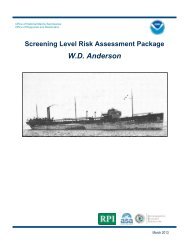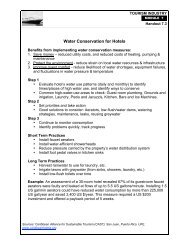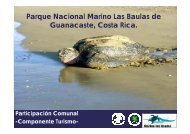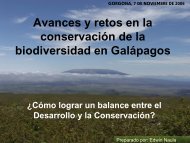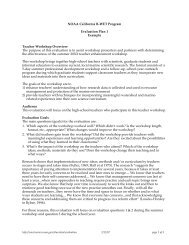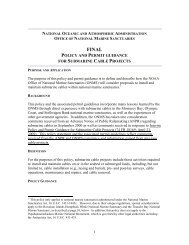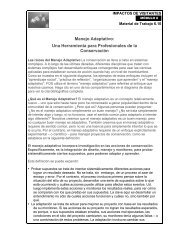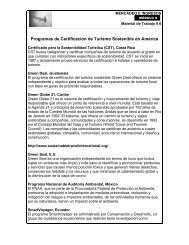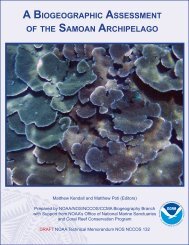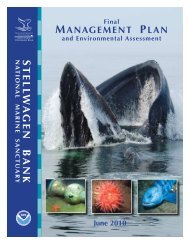The Hawaiian spinner dolphin, Stenella longirostris: Effects of tourism.
The Hawaiian spinner dolphin, Stenella longirostris: Effects of tourism.
The Hawaiian spinner dolphin, Stenella longirostris: Effects of tourism.
Create successful ePaper yourself
Turn your PDF publications into a flip-book with our unique Google optimized e-Paper software.
28<br />
Cook monument were not counted because they were <strong>of</strong>ten blocked from view by<br />
tourist vessels. Instantaneous scans (Altman 1974) were also conducted every 15<br />
minutes to determine environmental conditions and the number <strong>of</strong> swimmers, kayaks,<br />
and motor boats within 100 m <strong>of</strong> a <strong>dolphin</strong> school.<br />
Numbers and types <strong>of</strong> <strong>dolphin</strong> aerial activities and human activities were<br />
observed using 10x binoculars and continuously recorded onto microcassette between<br />
each instantaneous scan (see Introduction). Definitions <strong>of</strong> aerial activities were<br />
obtained from Norris et al. (1994a). Data were collected on the following <strong>dolphin</strong><br />
activities: head slaps, tail slaps, back and side slaps, salmon leaps, spinning leaps, flips<br />
(tail-over-head leaps) and the number <strong>of</strong> times <strong>dolphin</strong>s were observed bow riding in<br />
front <strong>of</strong> kayaks and motorboats. <strong>The</strong> types <strong>of</strong> human activities recorded include number<br />
<strong>of</strong> times motor boats approach, drive through, or follow within 10 m <strong>of</strong> <strong>dolphin</strong>s,<br />
number <strong>of</strong> swimmers following within 10 m <strong>of</strong> <strong>dolphin</strong>s, and number <strong>of</strong> kayaks<br />
following within 10 m <strong>of</strong> <strong>dolphin</strong>s. Individual swimmers were identified by gender and<br />
color <strong>of</strong> swimsuit. Kayaks were identified by boat color and gender <strong>of</strong> occupants.<br />
Data Analysis<br />
Hourly scans from 128 days (57 days without <strong>dolphin</strong>s and 71 days with<br />
<strong>dolphin</strong>s) were analyzed by a Mann-Whitney U test to determine if significant changes<br />
in human activity in Kealake’kua Bay occur between days with and without <strong>dolphin</strong>s.<br />
Transcripts from 10 days with BSS 3 or less and over five hours <strong>of</strong> continuous<br />
observations <strong>of</strong> <strong>dolphin</strong>s were compared using a Mann-Whitney U test to determine if<br />
the bay is utilized equally by males and females on days when <strong>dolphin</strong>s were present.



